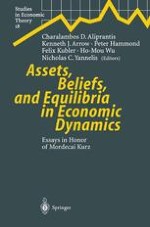2004 | Buch
Assets, Beliefs, and Equilibria in Economic Dynamics
Essays in Honor of Mordecai Kurz
herausgegeben von: Professor Dr. Charalambos D. Aliprantis, Professor Kenneth J. Arrow, Professor Peter Hammond, Professor Felix Kubler, Professor Ho-Mou Wu, Professor Nicholas C. Yannelis
Verlag: Springer Berlin Heidelberg
Buchreihe : Studies in Economic Theory
Enthalten in: Professional Book Archive
